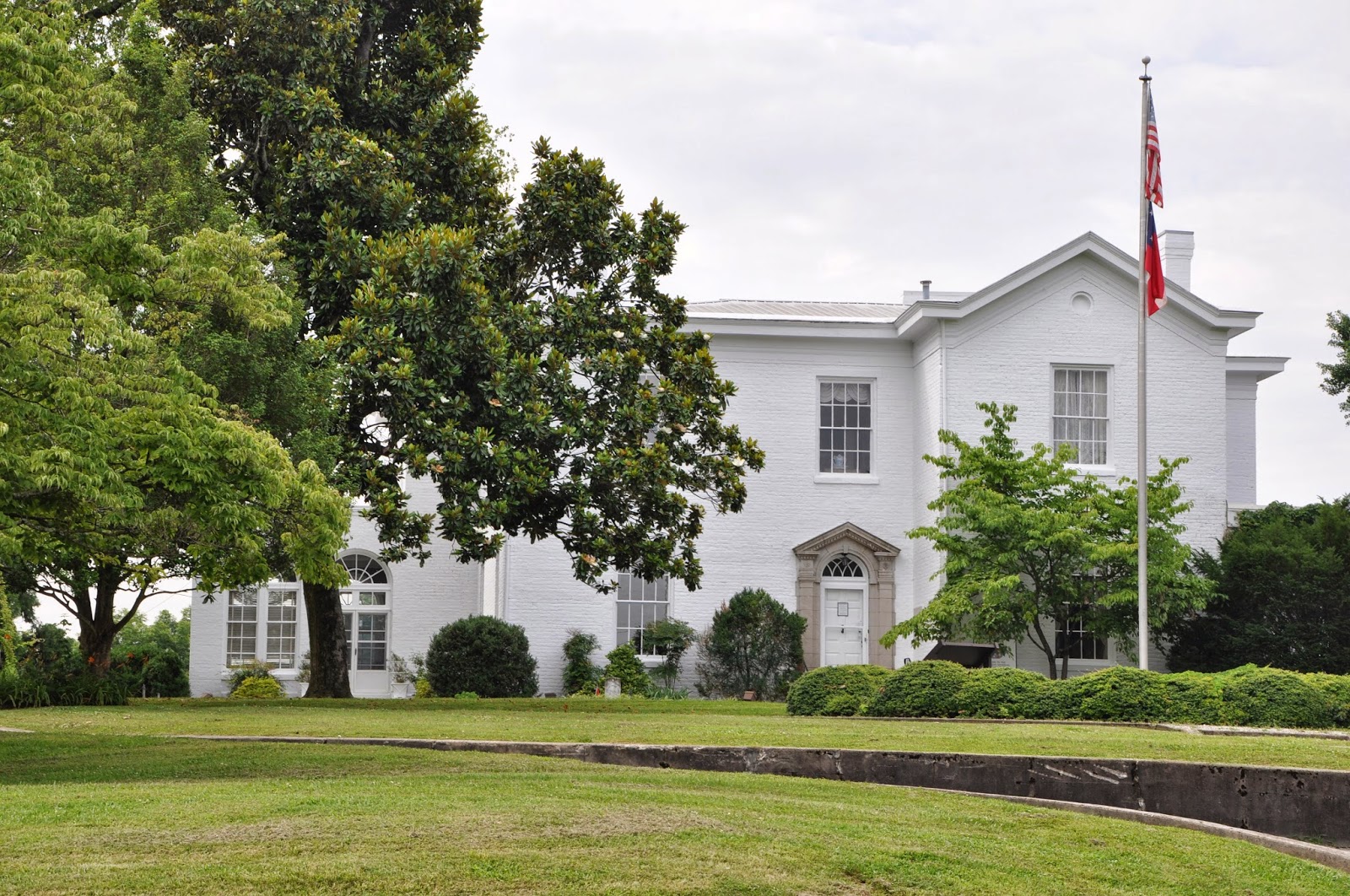1. Mount Olive Cemetery Sultana Monument: This monument is in the cemetery on the hill beside the Mount Olive Baptist Church stands the Knoxville Sultana monument that was erected through the efforts of the Knoxville area Sultana survivors. The dedication service was on July 4, 1916, with several Sultana survivors present.
2.View of the bluff from Neyland Dr: Several Forts were located along the South side of the river including Fort Higley, Fort Dickerson and Fort Stanley.
3. Fort Dickerson: Fort Dickerson was constructed during the winter of 1863-63 and named for Lt Jonathan Dickerson who was killed in the Knoxville Campaign.
4.Pontoon Bridge: Marker near the site of the pontoon bridge built by Union troops
5. Lamar House- Bijou Theatre:
It was here that General William P. Sanders died on November 19, 1863.
He was the only general killed in the Knoxville Campaign. This hotel was
built in1817.
6.
East
Tennessee History Center: Museum, Knox County Archives and the
McClung Collection are located in this building. There is also
information about area historic sites.
7. Mabry- Hazen House and Confederate Cemetery: Home of Joseph A. Mabry, Jr who outfitted an entire Confederate company recruited in Knoxville. The company was called 'The Mabry Grays' in his honor. The house is open to the public and information about the Confederate Cemetery is available at the Mabry- Hazen House.
8. View from Mt Cavalry Baptist Church: This is the Northern most extension of the Union line.
9. Battery Wiltsie: Historical marker, view overlooking the railroad
10. Deaf & Dumb Asylum (Old Knoxville City Hall) was built about 1848 and was used as a hospital by the Union and Confederate armies.
11. National Cemetery: Began about 1863 as a burial place for for casualties of the Knoxville Campaign
12. Old Gray Cemetery: This park like cemetery was founded in 1852 and many people who played a prominent role during the Civil War are buried here.
13. McClung Museum: Located on the campus of the University of Tennessee, The Civil War in Knoxville is a permanent exhibit.
14. NY Highlander's Monument: the Highlanders helped defeat Longstreeet's troops at the Battle of Fort Sanders.
15. Fort Sanders Assault Historical Marker
16. United Daughters of the Confederacy (UDC) Monument dedicated to the Confederate soldiers who fell in the assault on Fort Sanders November 29, 1863. Fort Sanders Marker
17. Crescent Bend (Armstrong- Lockett House): This house was used by both Union and Confederate Armies as a command center and hospital.
18.Second Presbyterian Church: “On November 17th, the Federals retreated to Knoxville, only to find the earthwork defenses barely begun. In order to make the city defensible, time was needed to construct gun emplacements and rifle pits. This prominent hill was chosen as the defensive position from which to stall the advancing Confederates. The responsibility of fending off the Confederates was given to 30-year-old cavalry General William P. Sanders, a southerner and West Point graduate who chose to remain with the Union. With only 700 troops protected by fence-rail breastworks, Sanders held the line commanding the Kingston Road for over 24 hours. In the last minutes of the fight, Sanders was mortally wounded. He died the next day in Knoxville and was buried at the 2nd Presbyterian Church on Market Street. Ironically, the Second Presbyterian Church moved to this site in 1956.” Dot Kelley
19. Bleak House- Confederate Memorial Hall: “This antebellum home was headquarters to both Gen. Longstreet and General Lafayette McLaws during the siege of Knoxville and the battle of Fort Sanders. Cannons at times were fired from the lawn; the tower was used by sharpshooters firing on Fort Sanders 2500 yards to the northeast. At the foot of the garden, the enterprising Confederates constructed a flatboat and telegraph wire ferry to move cannon to the south side of the river. Gen. Longstreet directed the battle of Fort Sanders from this house, which is now a museum owned by the United Daughters of the Confederacy (UDC).” Dot Kelley
20. Battle of Campbell Station: In early November 1863, Lt. General James Longstreet, with two divisions and about 5,000 cavalry, was dispatched to attack Major General Ambrose E. Burnside's troops at Knoxville. Following parallel routes, Longstreet and Burnside raced for Campbell's Station, the place where the Concord Rd intersected the Kingston Road just South of Knoxville. Burnside hoped to reach the crossroads first and continue on to safety in Knoxville; Longstreet planned to reach the crossroads and hold it, which would prevent Burnside from gaining Knoxville and force him to fight outside his earthworks. Longstreet's plan was not successful.
21. David Farragut Monument and Farragut Museum: David Farragut served in both the War of 1812 and the Civil War. He was born near this location.
View Knoxville Civil War Driving Tour in a larger map













.JPG)









No comments:
Post a Comment